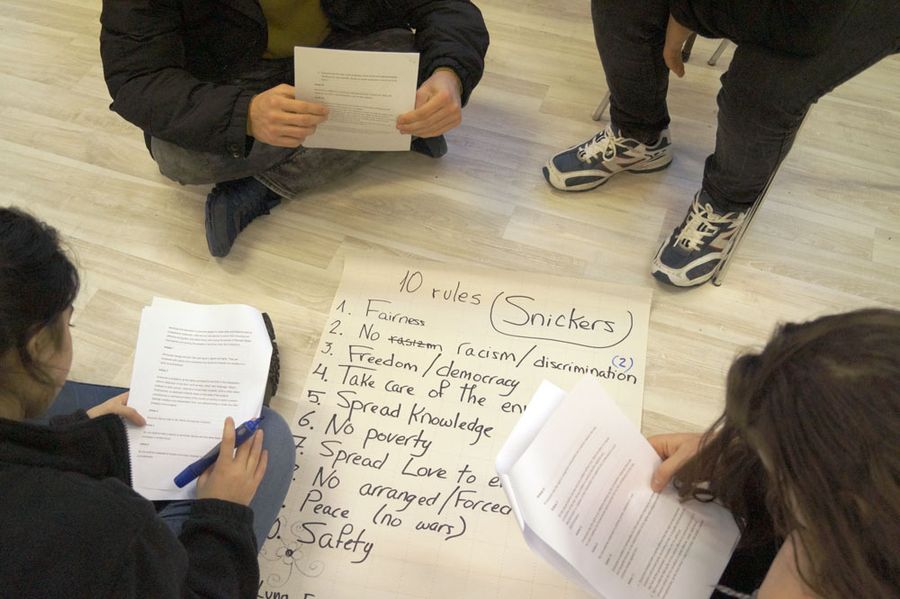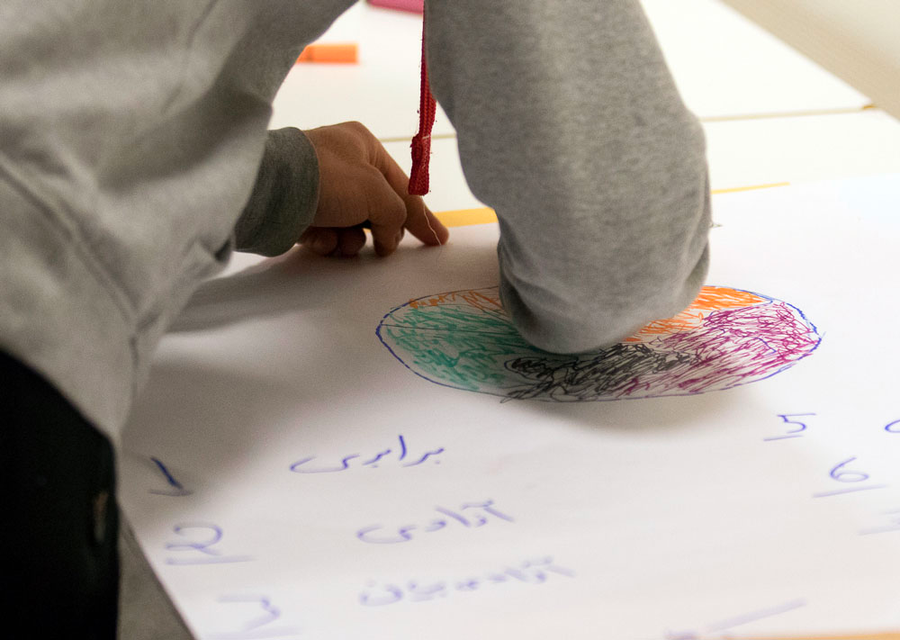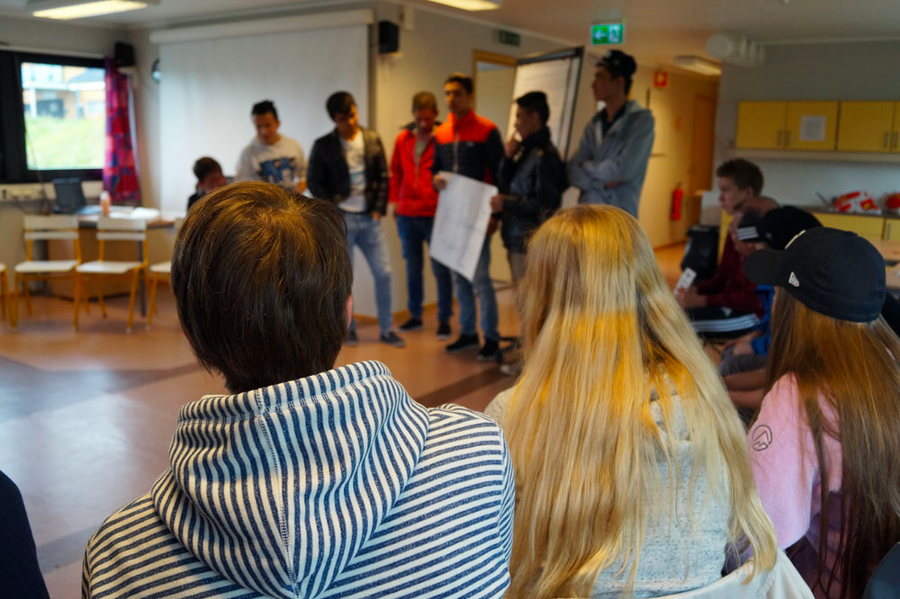Foto: The Human Rights Academy
Activity:
The new planet
Which rules should be in force so that people can live good lives in a society? This group work will prepare the partisipants for a lecture about human rights.
Photo: The Human Rights Academy
Quick facts

Human rights • Democracy and citizenship

Youth school • High school • Adult education • Organizations and others

Ca 2 hours

Materials: Large sheets of paper. Pen and paper. Copy of the Universal Declaration for each participant. Computer and projector.
Activity goals
- Reflect on which rules that should be in force in a society so that people can live good lives.
- Understand that the ultimate goal of human rights, is to create good societies for all people without discrimination.

Based on the exercise "The new planet" in the book "Build bridges, not walls" by Lillian Hjorth and Enver Djuliman, Humanist forlag (2007). Since 2008, more than 2400 unaccompanied minor asylum seekers have created their own “planet-rules”. The exhibition “The New Planet” highlights their reflections.
Instructions
- The facilitator organises small groups (3-5 participants) and introduces the task:
A catastrophe has taken place on Earth and all life has been wiped out. You are the only fortunate people to get on board a spaceship that is on its way to an entirely new planet. The planet strongly resembles Earth, with mountains, water, plains, oceans and an atmosphere you can breathe in. There is nature, forest, grass, fruit trees, vegetables and animals. The only thing missing is people. You are the first human beings on the planet. But afterwards, you will settle there and multiply. As the first people, you have the privilege to decide what rules shall be in force. The rules must not only apply to the individuals in your group, but to all the people who will eventually live on the planet. Each group must agree on 10 rules that will apply to all people on the planet so that they can live good lives. The rules must be written down on a big piece of paper. You can decide on a name for the new planet (30 min). - Everyone comes together in a plenary session where the groups present their planets. During the presentations, the facilitator shall encourage discussion and in-depth reflection on the different rules.
- The process will reveal that many of the group´s rules have similarities to, and the same intentions as, modern human rights. The facilitator concludes that the participants’ group work, in a way, resembles the negotiating process that the UN´s Human Rights Commission undertook after the Second World War, where state representatives from all over the world agreed on some basic human rights that should apply to all people everywhere. This exciting history is what they now will learn about.
- The facilitator lectures on the origin and content of the Universal Declaration of Human Rights (1948).
- After the lecture, everyone receives a copy of the Universal Declaration and they all return to their initial small groups. The task now is to compare their own planet’s rules with the articles in the Universal Declaration. Which articles regulate the same issues as their own rules? The articles’ numbers should be written alongside the rules (20 – 30 min).
- Everyone returns to the plenary session for a summary. The participants will have discovered that many of their own rules are in accord with the contents of the Universal Declaration. This is a good opportunity to look in more detail at a number of the articles and become more familiar with them.
- The facilitator concludes that international human rights represent values and norms that are common to human societies worldwide. When the Universal Declaration was adopted in 1948, the UN member states declared that they would work to protect and promote human rights. This became the foundation for the international human rights system we know today.
- If the group wants to learn more, the next step can be to hold an additional lecture on how the international human rights system has developed since 1948. A good tip is also to include a film about the Universal Declaration of Human Rights.
Reflection
- Why is it important that people reflect upon which rules should be in force in a society for people to live good lives?
Debriefing
One main conclusion is that the international human rights represent values and norms that are common to human societies worldwide. Human rights connect to human needs, that can be said to be the same all over the world.
When the Universal Declaration was adopted in 1948, the UN member states declared that they would work to protect and promote human rights. This became the foundation for todays´ extensive international human rights regime.
Tips for the facilitator:
- Sometimes participants can ask “critical” questions about rules of the other groups in the plenary. The facilitator should underline that the short time (30 minutes), makes it impossible to think about all rules and regulations that could be in force. On this background the participants should show respect to each other, show good will and have a positive attitude.
- Sometimes, after the groups have presented their planets, the facilitator can be asked which planet he/she like the most. This is a good opportunity to underline that the aim is not to identify the “best” planet. On the contrary, the aim is to learn from each other. The “best” planet will be a new planet which include the best rules from all the groups. This point can also illustrate how democracy works. Everyone should be invited to reflect, have a say, and be listened to. After discussion, it is possible to reach a compromise that everyone can respect.




